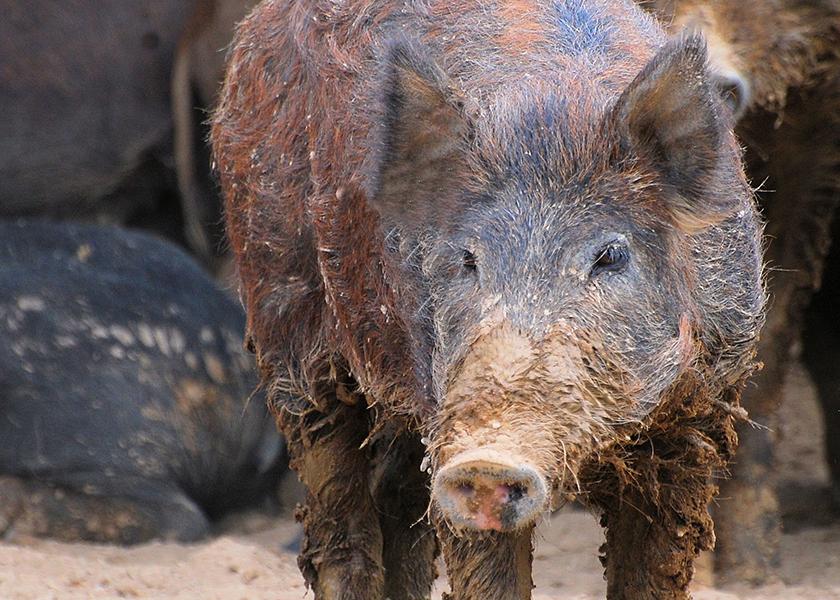Oklahoma Makes Strides to Decrease Feral Swine Population

Efforts to control the feral pig population in Oklahoma are ahead of last year, USDA reports.
USDA’s Animal and Plant Health Inspection Service (APHIS) created the National Feral Swine Damage Management Program, established by the 2018 Farm Bill, which brings under one umbrella damage management programs already in operation from coast to coast. As part of this effort, APHIS has been working to increase its involvement with tribal partners wanting to reduce problems caused by feral swine.
Scott Alls, state director of USDA’s Wildlife Services spoke on Tuesday at a USDA consult with tribes, Public Radio Tulsa reports.
Alls noted that 78% of his department’s work deals with feral hog management. Despite the pandemic slowing down efforts at public outreach, he said they’ve captured more swine this year than they did last year. In fact, the state is about 2,000 hogs ahead of where they were in 2020.
The project has removed 15,000 pigs to date, Public Radio Tulsa reports. The project was started in areas where the hog population wasn’t healthy or able to replenish itself quickly from neighboring populations.
Feral swine leave a path of destruction wherever they roam. Feral swine also have the potential to carry and spread more than 30 diseases, including several that could affect domestic swine herds and even humans.
More from Farm Journal's PORK:
The Wild Hog Knows No Fear: True Stories of One of Ag’s Biggest Threats
Killing Hogzilla: Hunting A Monster Wild Pig
Monster-Sized Wild Pigs are on the Rise in Canada
Wild Pig Wars: Controversy Over Hunting, Trapping in Missouri
Texas Pork Producers Face Uphill Battle with Wild Pigs
Deadly Terrorist Threatens the Lone Star State’s Domestic Pig Herd







